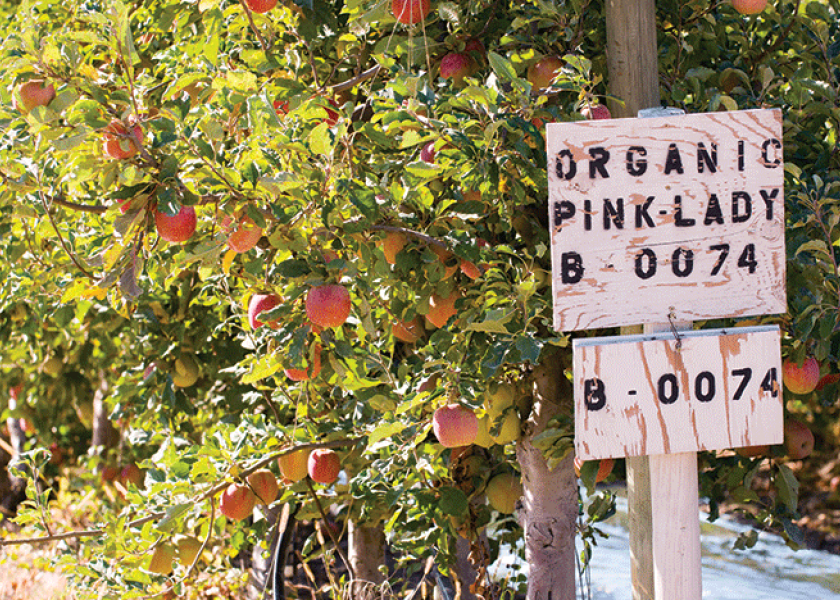Organic produce consumption continues steady rise

With consumption of organic products having set a new standard across the U.S. in 2017, organic produce suppliers say they’re poised for further growth.
“Organic consumption continues to grow with larger players entering organic,” said Mayra Velazquez de Leon, CEO of San Diego-based grower-shipper Organics Unlimited Inc.
At one time, a typical grocery store’s produce department might have one or two organic items placed within a sea of conventional rivals; now, that isn’t the case, Velazquez de Leon said.
“Nowadays you’ll enter a supermarket and be able to find both an organic and conventional options for most items,” she said.
“We expect to see a continuation in this trend as consumers continue to become more health-savvy and environmentally conscious with organic eventually becoming the primary, mainstream option.”
The growth is following a shift in consumer priorities, said Stephen Paul, category director for stone fruit, fall fruit and blueberries with Porterville, Calif.-based Homegrown Organic Farms.
“You’ll see more conversion of people producing organic, as that demand is going to continue to rise,” he said.
Suppliers note their organic offerings continue to grow.
“We see the growth of organics in recent years as a key indicator for what consumers want, moving forward, and that is why we have focused on expanding our line of organic products,” said Jacob Shafer, senior marketing and communications specialist for Salinas, Calif.-based grower-shipper Mann Packing Co.
New acres continue to go in, and conventional land is converting to organic production, said Chuck Sinks, president of sales with Yakima, Wash.-based Sage Fruit Co.
“We continue to see an increase in the popularity and consumption of organic apples, which is why our organic program is also continuing to grow,” he said.
“Not only are we planting new acreage of organic orchards, but we are actively transitioning our conventional orchards as well. Currently, organic apples make up about 15% to 20% of our total apple volume.”
It is an exciting time to be involved with organic production, said Brianna Shales, communications director with Wenatchee, Wash.-based Stemilt Growers LLC.
“We’ve seen Nielsen data that says organics are now about 10% of the total produce department dollars, which is exciting,” she said.
Astute retailers are getting involved in the changes through organic promotions, Shales said.
“As volumes of key produce items — like apples — grow in number in organics, we encourage retailers to change the way they promote and place organics,” she said.
“They must consider their product mix organically to make sure it aligns with top apple varieties and those newcomers that the consumer is seeking out.”
It also is important for retailers to “align the 4P’s of marketing” — product, placement, price and promotion, Shales said.
“Focusing on flavor and quality, building great displays, pricing it in line with conventional apple promotions, and promoting organics regularly is the way for retailers to build sales,” she said.
The increased demand for organic also is part of a larger pattern of growth for produce in general, said Cindy Jewell, vice president of marketing for Watsonville, Calif.-based California Giant Berry Farms.
“We do see growth in berries overall, which includes organic, but don’t see organic growing at a higher pace than conventional with strawberries and blueberries, due to high volume of both already based on demand,” she said.
Increased volume leads to competitive prices, which could create even more sales, said Andy Tudor, vice president of business development with Selah, Wash.-based Rainier Fruit Co.
“Regarding apples, the organic category has enjoyed double-digit growth in eight of the past 10 years; we see tremendous growth in our organic blueberry program, as well,” he said.
“With the additional volumes available in each of our commodities, a value proposition of organic produce will bring the retails down to levels more affordable to increasing volumes of shoppers. Consumers are seeking healthier options, especially for their kids, and, with all of these factors coming together, the future looks bright for continued growth.”







